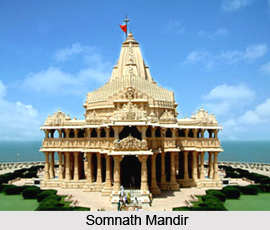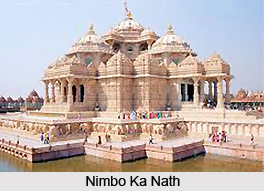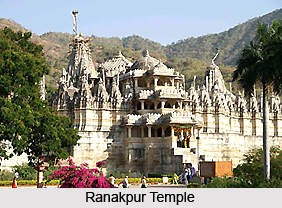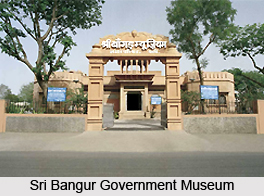 Tourism in Pali district attracts a lot of people, both locals as well as foreigners. People from different cities of India come to Pali to visit Ranakpur, Jawai Dam, Parshuram Mahadev Temple, Jadan Aashram etc. Apart from the many beautiful temples located in the district, other places of tourist interest are also to be found here which one can visit at leisure. Prime among the places of leisure tourism in the district is the Sri Bangur Museum which has a remarkable array of ancient historical items on display. Some of the famous places of tourism in Pali district are discussed below.
Tourism in Pali district attracts a lot of people, both locals as well as foreigners. People from different cities of India come to Pali to visit Ranakpur, Jawai Dam, Parshuram Mahadev Temple, Jadan Aashram etc. Apart from the many beautiful temples located in the district, other places of tourist interest are also to be found here which one can visit at leisure. Prime among the places of leisure tourism in the district is the Sri Bangur Museum which has a remarkable array of ancient historical items on display. Some of the famous places of tourism in Pali district are discussed below.
Pilgrimage Tourism in Pali District
The Ranakpur Jain Temples are famous for the magnificient Jain temples built here during the reign of Rana Kumbha of Mewar in 15th Century. The Ranakpur temple complex is known for its architectural and natural beauty. It has 24 halls containing 1440 pillars, each one different from the other and each covered with intricate, yet delicate, carvings. The Central temple dedicated to the Jain Thirthankara Adinath ji, is called Chaumukha (four-faced). Sadari can be easily reached by bus from all over Rajasthan.
Nimbo Ka Nath is situated between Falna - Sanderav route. Legend has it that the Pandavas of Mahabharata stayed here with their mother Kunti during the time of their exile. Kunti used to worship Lord Shiva at this place. The Pandavas also established Navdurga at this place. Falna can be reached easily by bus or train.

Somnath Mandir is famous for its historical background and Shilp Art. It is situated at the centre of Pali city. It was constructed by the then King of Gujarat, Kumarpal Solanki in the Vikram samvat era 1209. The temple is dedicated to Lord Shiva. In the premises of the temple there are many small temples of other Devi Devtas.
Parshuram Mahadev Temple is on the top of one of the hills of the Aravalli mountain ranges in the Desuri tehsil. There is a cavern on the hill where a natural Shivling is a major attraction of the devotee of Lord Shiva. Around 400 narrow steps have to betaken from the top of the hill in order to reach the cavern. Legend has it that the great ascetic, Parshuram from the Ramayana era, practised penance in this cavern. Fairs are also organised here twice a year. The mandir is located hardly 14 km from Sadari Town. It can be easily reached by bus from all over Rajasthan.
The Jadan Ashram was established in the year 1990 by Swami Maheswarananda to promote the ancient Indian science of yoga and the invaluable spiritual treasures of Vedic culture. It is situated over an area of 250 acres. The Central building of this large complex is constructed in the shape of the ancient symbol Om. The sound of Om consist of three letters; A, U and M. It represents the cosmic vibration, the original eternal sound. This central monument will be the largest man-made symbol of OM in the world. The 108 compartments of residential units that are to form this impressive OM shape, attract tremendous cosmic energy.
The Shanidham Aashram is situated in the Pali tehsil of Pali district, hardly 10 km from Pali.
Leisure Tourism in Pali District
One of the biggest dams of western Rajasthan is the Jawai Dam. It is situated in Sumerpur tehsil of pali district. With a capacity of 6000 million cubic feet, it is the main water supply source of Jodhpur and Pali districts. Besides this, many villages of Jalore and Pali are irrigated through this dam.
 Lakhotia Garden is situated in the heart of Pali city and surrounded by a pond, named Lakhotia (also known as city tank). A beautiful temple of Lord Shiva is also situated in the middle of garden.
Lakhotia Garden is situated in the heart of Pali city and surrounded by a pond, named Lakhotia (also known as city tank). A beautiful temple of Lord Shiva is also situated in the middle of garden.
Sri Bangur Government Museum, Pali is located near the old bus stand. The foundation of the museum building was laid on 26th April, 1982 and the museum was formally thrown open to the public on July 19th, 1991. The exhibits here include highlighting sculpture, specimen of minerals, coins of historical interest, miniature paintings, arms and armour, wooden handicraft, tribal life and epigraphic exhibits.
The main sections here are:
1. Pre-Historic Section: It exhibits stone tools belonging to the Palaeolithic period. Blade, Flake, Hand axe and Scrapper type tools are in display.
2. Archaeological Section: Archaeological Section is the most important section. There are stone and metal images of Brahamanical and Jain deities collected from Balwana, Bali, Nadol, Hemawas, Nimaj and Sewari of the district Pali. Objects also collected from Bhinmal, Savidar and Sayla of the Jalore district. These sculptures range in date from the 6th century A.D. down to 17th -18th century A.D. Inscriptions and archaeological pieces are also included in the collection. The major attractions of this section include a statue of Lord Vishnu, A rare bronze statue of Jivant Swami, statue of Lord Ganesha, Sur Sundri, Goddess Saraswati, Parikar, Chandra Prabhu, Goddess Kali and architectural pieces such as parts of a Jain temple with exquisite carvings etc.
3. Numismatics and Epigraphic (Copper-plate) Section: Rich collection of coins belonging to Ala-ud-din Khiliji, Firuz Shah Tughluq, Mubarak Shah and later Mughal rulers are found here. Copper plates are also on display.
 4. Painting Section: The contribution of Rajasthan in the realm of Indian Paintings has been immense. Miniature paintings of the former rulers of Jodhpur state are on display.
4. Painting Section: The contribution of Rajasthan in the realm of Indian Paintings has been immense. Miniature paintings of the former rulers of Jodhpur state are on display.
5. Arms and Armour Section: Weapons in this museum are displayed in a showcase. These include Sword, Shield, Tabar (Axe), Gun and Pistol. Cannons are also displayed.
6. Handicrafts and Exhibit of Tribal Life: This section aims at highlighting regional wooden handicraft. Ornaments, Musical instruments and costumes of the Garasiya tribe are also on display.
Discussed above are the major places of tourism in the Pali district.






